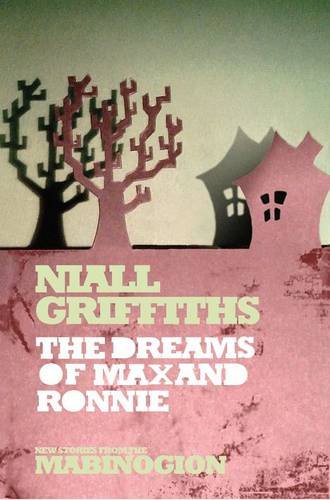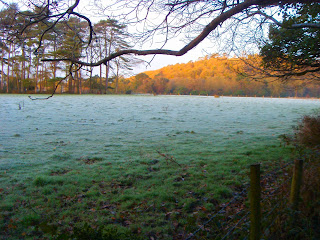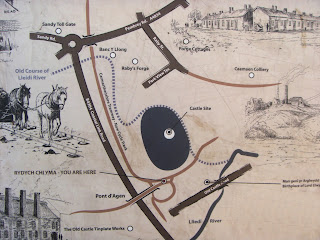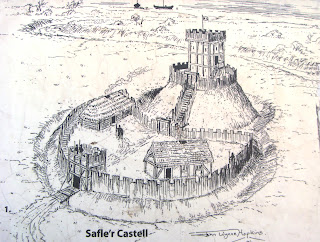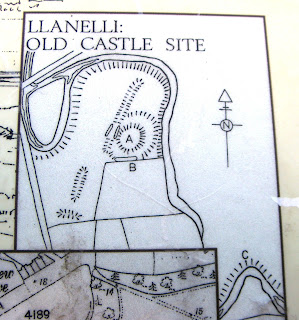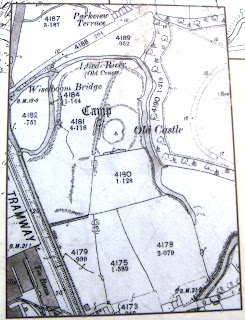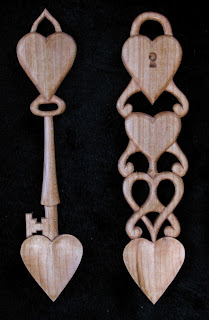Blogs
In January 1823, Reverend William Buckland discovered in Goat's Hole, one of the Paviland Caves on the Gower, one side of a human adult skeleton, stained with red ochre and accompanied by seashell necklaces which he incorrectly assumed was a female and became known as the"Red Lady of Paviland".
Buckland who was Professor of Geology at Oxford Univerity and a devout Christian also underestimated the dating of the find as he believed that no human remains could be dated earlier than the Bible's Great Flood. However, further examinations have shown that the "Red Lady" was, in fact, a male and at 24,000, the oldest known ceremonial burial in Western Europe.
Born on this day 1937 in Tiger Bay, Cardiff
Shirley Bassey - world famous superstar.
Dame Shirley found fame in the mid-1950s and has since become one of the world's most popular female vocalists. She is perhaps best known for recording the theme songs to the James Bond films "Goldfinger" "Diamonds Are Forever" and "Moonraker"
Shirley Bassey was raised in the working class neighbourhood of Splott. Her mother was from Yorkshire and her father was a Nigerian seaman who left the family when Shirley was a baby. Bassey initially worked in an Enamelware factory, before making her professional debut at 16 and her first major hit was "The Banana Boat Song," after which she has had countless hits and has become a highly respected figure in the music industry.
Born on this day 1823 in Llanbadoc, near Usk.
Alfred Russel Wallace, who was one of the greatest natural history explorers of the 19th century and a leading thinker on evolution, whose unconventional ideas caused much discomfort to the scientific community at the time.
Wallace was also a biologist and social activist, but he is best known for independently coming up with the theory of evolution by natural selection and co-publishing a paper on the subject with Charles Darwin in 1858. Despite this, his fame faded quickly after his death, however recently with the publication of several his biographies and anthologies, he is becoming a much more well known and respected figure.
Born on this day 1846 in Maesteg
Henry Bracy - one of the most popular comic tenors of the Victorian era.
Bracy, the son of an ironworks manager began his career in Plymouth, before spending four years performing at London's Gaiety Theatre in the early 1870s. He and his wife then toured Australia, returning to Britain in 1880, where Bracy further built his reputation in comic opera and operetta. In 1888, they returned to Australia, where until his death in 1917, he became a performer, stage manager, stage director and casting agent in Sydney.
On 8th January 2006, four members of Rhyl Cycling Club, including a 14-year-old boy were killed in a road accident near Abergele, when the driver of a car lost control on the icy road that had not been gritted. Subsequently, the driver was fined for having defective tyres.
A Croeso/Welcome Competition For Members Of The Mabinogion Group On AmeriCymru
By Ceri Shaw, 2013-01-12
Win a Copy of Niall Griffiths The Dreams of Max And Ronnie
In the New Stories From The Mabinogion Series
All you have to do is answer the following question:- "What does the Mabinogion mean for you?" The prize ( see below ) will go to the author of the most eloquent and/or insightful answer. The competition is open to all group members and the winner will be announced on March 1st.Answers can be a couple of sentences or a couple of paragraphs in length. SO dust off your old copy of the Mabinogion and get your thinking cap on.
To join the group go here:- Mabinogion Group
To answer the question go here:- What is the Mabinogion?
-
Iraq-bound young squaddie Ronnie takes something dodgy and falls asleep for three nights in a filthy hovel where he has the strangest of dreams. He watches the tattoed tribes of modern Britain assemble to speak with a grinning man playing war games. Arthurian legend merges with its twenty-first century counterpart in a biting commentary on leadership, individualism and the divisions in British society. Meanwhile Cardiff gangsta Max is fed up with life in his favourite nightclub, Rome, and chases a vision of the perfect woman in far flung parts of his country.
http://www.serenbooks.com/book/the-dreams-of-max-and-ronnie/9781854...
On 9th January 1972, UK miners' went on strike, after wage negotiations between the National Union of Mine workers and the National Coal Board failed to find an agreement. It was the first time since 1926 that British miners had gone on strike and resulted in power shortages. A state of emergency was declared on 9th February, with the dispute finally being resolved on 19th February.
Born on this day 1917 in Penclawdd, Gower.
Haydn Tanner - former Wales captain and Lions rugby international
Tanner was part of the Swansea side that beat the touring All Blacks in 1935, whilst still a schoolboy. His outstanding performance in that match was to earn him his first Welsh cap later that year when he was again on the winning side against the All Blacks. He later studied chemistry and maths and taught in Bristol, before becoming an industrial chemist and moving to Surrey.
Born on this day 1987 in Llantrisant
Bradley Davies - Wales rugby international, who was captain of the under 20s squad when they won the grand slam in 2005.
Brian Nancurvis (14 August 1937 – 9 January 2012), who fought under the name Brian Curvis was a former British and Commonwealth welterweight champion and one of the greatest boxers ever produced by Swansea.
He was undefeated champion and the only welterweight to have won two Lonsdale Belts outright. Curvis won the BBC Wales Sports Personality of the Year award in 1960.
Born on this day 1946 in Blaenavon, Monmouthshire
Terry Cobner - former Wales and Lions rugby international and captain. Cobner spent 14 seasons as a player with Pontypool, a record 10 of them as captain.
Born on this day 1833 in a house called "Y Fron" in Llanbrynmair, Montgomeryshire.
Richard Davies (Mynyddog) - who was an extremely popular poet in his day.
His tuneful poems dealt with the joys and tribulations of the common people, the folly of pride, and the absurdity of hypocrisy. He took his bardic name, ‘ Mynyddog ,’ from Newydd Fynyddog , a hill near his home.
He was a frequent competitor at the eisteddfodau and concerts up and down the country and often travelled to London to listen to the principal singers there. He was in great demand as an adjudicator, singer and especially as an eisteddfod conductor both in Wales and England.
Arthur Griffith (who had a Welsh grandfather) was made President of Dail Eireann (Irish Parliament) on 10th January 1922. He was the founder and a leader of Sinn Fein and led the Irish delegation at the negotiations in London that produced the Anglo-Irish Treaty of 1921.
On 10th January 1882 — The vessels Constancia and Primus collided whilst attempting to pass through Newport Town Docks. The lock was blocked and the vessels already in the dock were trapped for nearly two weeks.
The accident incurred substantial expense for the Newport Dock Company and eroded customer confidence in the company, which resulted in the Town Dock being used for dealing with the smaller vessels whilst larger cargoes were concentrated at the Alexandra Dock. Unable to survive the downturn in trade in the 1920’s the Town Dock was finally closed in October 1930.
On 10th January 1952, an Aer Lingus aircraft (named 'Saint Kevin') on a London–Dublin flight crashed at the Cwm Edno bog in Snowdonia, killing all twenty passengers and the three crew. It took rescue workers and police officers almost an hour to reach the remote site in atrocious weather conditions and heartbreakingly the only thing they found unscathed in the wreckage was a child's doll.
William Williams Pantycelyn (Y pêr ganiedydd - The sweet songster), died on 11th January 1717.
Williams who was born in the parish of Llanfair ar y bryn, Carmarthenshire in 1717, is generally acknowledged as Wales' most famous hymn writer and was also one of the key leaders of the 18th century Welsh Methodist revival.
Williams experienced a religious conversion while listening to Howell Harris preaching in Talgarth in 1737 and took deacon's orders in the Church of England, being appointed curate to Theophilus Evans in the parishes of Llanwrtyd, Llanfihangel Abergwesyn and Llanddewi Abergwesyn. His best known hymn is Arglwydd, arwain trwy'r anialwch, translated as the English Hymn Guide Me, O Thou Great Jehovah.
Born on this day 1941 in Prestatyn
Barry Flanagan - sculptor best-known for his bronze statues of hares (picture - Thinker on a Rock)
Flanagan studied architecture at Birmingham College of Arts and Crafts and sculpture at Saint Martin's School of Art in London. He was the subject of a biographical film by Peter Bach, The Man Who Sculpted Hares: Barry Flanagan, A Life.
Born on this day 1947 in Glynncorwg, Neath.
Rod Thomas - former Wales soccer international.
At club level, Thomas made nearly 300 appearances for Swindon, including the 1969 League Cup final and has made the most international appearances ever by a Swindon player. He moved to Derby County in 1973, with whom he won a first division winners medal.
Born on this day 1948 in Swansea.
Terry Williams - best known as the drummer for Dire Straits between 1982 and 1988.
On 11th January 1970, the last trolleybus ran in Cardiff, the last such system in Wales. A trolleybus was an electric bus that was run by the electricity supplied from overhead wires, through spring-loaded trolley poles. It differed from a tram in that it didn't need tracks.
1902 - The Corporation of Cardiff introduced electric powered trams, when it took over the private Cardiff Tramway Company which had been supplying a service of horse pulled trams and buses since 1870. Private operators had been running horse buses since at least 1845.
1914 - The first trolleybuses in Wales come into operation in Aberdare. They were initialy however beset with problems as they suffered damage from the poor road surface and the electric collectors (nicknamed the 'monkey') were prone to drop off the wires and land in the street.
1942 - The first trolleybuses were introduced in Cardiff. In terms of comfort and speed, the trolleybus was popular with passengers, as the lack of vibration and the quietness made them very comfortable. However, their quietness earned them the nickname "the silent death" as pedestrians quite often could not hear them coming. Cardiff was unusual in that it had single-deck trolleybuses as well as double-deckers, due to several low bridges in the docks area.
19 62 - Motor buses began to replace the trolleybuses. Motor buses were operated since the early part of the 20th century, but early journeys would have been uncomfortable as pneumatic tyres were not fitted until 1924
1970 (11th January) - The last trolleybus ran in Cardiff.
On 12th January 1976, the most popular novelist in the world, Dame Agatha Christie died leaving a multi-million pound fortune, much of which is used to promote the arts in Wales.
In 1951 a young Welsh boy named Mathew Prichard was taken by his grandmother, Agatha Christie, to the Prince of Wales Theatre, Cardiff to see his first play, "Black Coffee" which she had written 25 years earlier. The following year she signed the world rights of "The Mousetrap" to her grandson as a 9th birthday present.
Prichard, now chairman of Agatha Christie Ltd which manages the literary and media rights to Agatha Christie's works around the world, set up the Colwinston Charitable Trust (named after the village in the Vale of Glamorgan), which uses royalties to promote the arts in Wales. The Welsh National Opera, Wales Millennium Centre, and Chapter Arts, have all benefited from the trust’s financial support.
On 12th January 1402, Owain Glyndwr captured his arch-enemy Reginald de Grey, 3rd Baron Grey de Ruthyn.
Reginald de Grey was in a long-running legal dispute with Glyndŵr, over the ownership of some of Glyndwr's land. King Richard II had been found in Glyndwr's favour, but on the usurpation of King Henry IV, Lord Grey was allowed to seize the land.
Glyndŵr responded in law in 1400, only to be told to grant de Grey concessions. The relationship between the two men was further strained when de Grey delayed giving Glyndŵr the summons from Henry IV to provide service in Scotland, until such time that it was impossible for Glyndwr to respond in time. This was seen by Henry IV as a treasonous act and Glyndŵr's estates were forfeited.
So on 16th September 1400, Owain took up arms, burned Grey's property and ravaged his lands. Then on 24th September, Glyndwr's forces were encircled at Welshpool and de Grey invited Glyndŵr to a reconciliation meeting. However de Grey arrived with a substantial army and attempted to imprison Glyndŵr. Glyndŵr escaped and went into hiding, but this confirmed him as a traitor in English eyes and King Henry now confiscated the estates of his supporters.
Glyndwr's rebellion then gathered momentum and in 1402, de Grey was captured in an ambush near Ruthin and a ransom of 10,000 marks demanded for his release, which Henry eventually paid.
Born on this day 1810 in Swansea.
John Dillwyn Llewelyn - photography pioneer, politician, scientist and philanthropist.
John Dillwyn inherited two estates in the Swansea, Neath area and according to instructions in his father's will, added the name of Llewelyn to his own.
* Llewelyn was married to a cousin of William Henry Fox Talbot, the British inventor of photography, who inspired Llewelyn to be at the forefront of photographic innovation in the 1850s. Llywelyn's Oxymel process, using vinegar and honey to preserve images made taking outdoor photographs much more practical.
* Llewelyn was the High Sheriff of Glamorgan and helped some of the leaders of the Rebecca Riots in the 1840s.
* With the threat of a French invasion he trained his own militia, the 5th Company Glamorgan Rifle Volunteers.
* He helped his friend Sir Charles Wheatstone, sink a length of insulated wire in Swansea Bay as part of his telegraphy experiments.
* The grounds of his Swansea estate were notable for their original landscape design. He was also particularly interested in astronomy and built only the second equatorial observatory in Wales.
* Llewelyn was a noted patron of many good causes, especially local schools and hospitals.
* He built cottages for his employees on his estate at what is now the village of Penllergaer.
* He gave the land for the public park, Parc Llewelyn, near Morriston.
Born on this day 1907 in Pembroke.
Reg Thomas - middle distance runner, who competed in the 1928 and 1932 Olympic Games.
Thomas was a Squadron Leader in the Royal Air Force, when on 14th March 1946 he was killed when the Lancaster bomber he was piloting, crashed on take-off at RAF Aston Down.
A clear sky and the promise of a good sunrise. Crisp air and a touch of "huff" breathing through teeth. For many years I have spurned the use of gloves, always warm handed, but this morning the old black woollen offerings found in an old raincoat are welcome as I reach the galvanised gates at the bottom of the garden. Delft, the Blue Merle is bouncing like Scrat the Squirrel from Ice Age despite her 15 years and Rusty is yelping like a demented soul. The problem is that the lock to the gate has frozen!
Unwilling to retrace my steps back up the garden, I persevere by blowing into the lock. Finally the key slides in but fails to turn in either direction. By now, Delft is bouncing on my feet and Rusty is chasing his shadow around the van. A few more gentle exhalations, and the lock releases and two canine tumbleweeds bowl in to the back lane. There is ice in the broken tarmac, and the ground is slippy. We pass cars glistening with icing sugar frosting, and agitated drivers scraping windscreens as they check their watch or phone to see how late they are....
No work this morning for us... But the light looks as though it may catch the morning scenery, so I head off past the old Stradey Grounds, up Denham Avenue and into the woodlands below Stradey Castle. The ground is crisp, but after all the rain in the last weeks, the woodland paths are saturated and muddy, the cover of the trees preventing the ice reaching the ground.
| |
| Path into the Woods - Council Houses to the left & Castle to the right |
The grounds of Stradey Castle are private but unfenced at this point, and there is clear sign that the paths are well used, though the woodland needs clearing and the stream beds are blocked. Looking straight ahead, you travel a woodland path, but ever concious of the contrast of the Council houses to the left and the Castle to the right.
At the end of the woodland, the land opens up into fields, bordering the Castle and forming a boundary between the Stradey Welsh School and the Sixth Form College formerly known as the "Boy's Gram"
The light is just right to catch the russet glow of the trees in winter in contrast to the white frosted grass...
Crossing the fields, there are remnants of the summer growth, glistening in the sunlight.
It is at times like these that I realise why my friends - the "professional" photographers, always carry their best camera with them - but I have only brought my handheld Samsung. But, note to self, this is a good time to be up and about to get a different light. I find the fields are well fenced and stock proof and wander around looking for a way across and come across a stately old tree - lying on the ground.
Further on we skirt Stradey Castle itself, the ground too boggy to cross, so we follow the playing fields of the two schools and out towards the front entrances. The Castle can be seen through the trees, but the sun has gone by now, and it will have to be another day to try to catch the stone and setting.
The day turns cloudy, still cold, and the ice starts to soak into the feet and ankles. Time for a cup of tea and some home made bread and cheese. I think I will have to put the central heating on when I get home ...
It is with a certain degree of irony that I note that over the last week, my blogs have been concerned with walks around the Llanelli area. This may not seem strange to many, but those who have known me over the years will be aware that exercise and walking are not favourite pastimes! I have friends who walk, I have supported friends while they tramped over Hadrian's Wall. I have dogs and acknowledge that they sometimes need more than the large Dog Flap in the back door and access to the paved yard. I do not "do" the gymn, and rarely feel the need to put on waterproofs and boots and head off in to the moist... "I may be gone a while !"
Yes , my walking friends know that I delight in the views from remote points, love the smell of the countryside and the open expanses. Yes I love these things - and normally from behind the wheel of my trusty 4 x 4. I relish in the ability to be able to take a maverick or terrano into locations that no mechanical vehicle has gone before.. in the warmth and comfort of the interior cab, and with the elements properly tamed behind the windshield...
Yet, over the last week or so, I have found myself expounding upon the history and landscape of Llanelli, with camera in hand and dogs at my side. Please accept that this is because we are within close proximity, and reasonable walking distance of the house - and not as a result of some new perambulatory perversion...
But I promised Ceri from Americymru , a fine website for ex-pat and resident Welsh people that after my walk around the Old Castle exercise track .. I would research more into the Old Castle itself.. And so, with the weather dry, and the temperature dropping - the dogs took me once more onto the Pont Agen Bridge - the best place to overlook the remnants of the Motte and Bailey that was once a mighty castle - possibly even built on Roman settlement ... but I run ahead of myself .....
From previous blogs, I have the pictures and history of Pont Agen, and as I stand upon the start of the bridge, I look behind me over the Old Castle Pond - or Pond Twym - which I learn means "Warm Pond" whichI will come back to later .
For the Motte and Bailey, the castle site itself, is in the middle of the Pond. Even with the winter sun and lack of leaves on the trees it is almost impossible to get a clear view of the island in the middle of the water. But the island is the site of the old castle itself.
| |
| The Central Island - site of the Castle |
| |
| January Morning - Old Castle |
The records of Carmarthenshire state that " an early mound castle unquestionably stood at Llanelly, the name of which has fortunately survived and lead to the identification of the site". The island in Old Castle Pond ( pond Twym) was once the Motte of the castle Carnwyllion. It is believed that the Motte was established by the Normans in the late 11th Century.
The Motte would have originally had a wooden tower known as a keep with a palisade on top of the mound with , below it, a defensive "bailey" containing the main living quarters, stables and administration buildings.
The castle was attacked by Rhys ap Gruffydd in 1190 and burnt in 1215 by Rhy Ieuanc during his onslaught on the Norman strongholds of Kidwellu and Gower. In the Red Book of Hergest, a version of the Brut reads for 1215 " Rhys Ieuanc gathered a host of immense size, and gained possession of Kidwelly and Carnwyllion, and he burned the Castle"
Of course back in those days, the river Lliedi wended its way around in a different direction and the Motte and Bailey was on solid ground.
Here the Lliedi river can be seen to wind around from where Old Castle road will be in the south towards where Raby street will be in the North. From here - the coast would have been visible - but access inland would also have been easy. A later map shows both streets and the new Tramway ( now the Cycle track ) before the pond was created as a reservoir for the new Tin Plate Works.
Here we can see Old castle Road at the bottom and Parkview Terrace at the North, with the old course of the Lliedi River.
It is then I discover that the Old Castle Pond was created as a quenching reservoir for the tin works, and is not natural. It is called Pond Twym - or the Warm Pond as the water would raise its temperature as a result of the works in the tin plates. Other sources suggest that Goldfish were resident in the pond for many years due to the warmth of the water, and there are youtube links of giantterrapinstill in the pond - though have never seen them as I pass by.
For me, in my early days working in Llanelli, my recollections are travelling up Old Castle Road, up to the level crossing which i now know was over the Tramway - not the railway as I thought in those days.
The Old Castle Pub was the last building in the street - still there now - but a bed and breakfast now - not a pub.
I have had many a pint here and more than one Christmas party. When I first knew the building the rear section was not there. I remember as they built into the back room, and then further out again. The last extension lasted about 9 years, and now is the tea room in the back.. but it is now a bed and breakfast and tea room ..
| |
| as seen in the early morning |
And so - to retrace my steps of years before, I look once more down Old Castle Road from the level crossing that is no longer there ....
Cars on pavements and for sale signs... but as I turn around - I can still see the Tin works building - now listed and protected - though finance for the development that was expected has drifted away and it now stands as a monument to the past .. stark .. but that can be the subject of another walk...
I mentioned that there were Roman links to the old castle - rather than just repeat, here is the link to another friend Lyn John who knows so much more than me about Llanelli History... LINK HERE
But the rain is beginning to fall - and so I make my way back home for a fine cup of tea, an opportunity to sit in front of the computer, and reminisce and post a couple of thoughts fro the past .. and look forward to some day in the future when Ceri will pop across the pond ( the big one) and I shall show him what I have learned today ...
.
Reproduced with kind permission from David Western's Portland Lovespoon Blog
Glory comes to the decisive!!
You really can't do better than a hand-crafted lovespoon if you are looking for a Valentine's giftwhich truly says, "I love you".
So while I apologize for not giving you any breathing room between Christmas and Valentines Day, you will thank me when your custom designed and hand-made lovespoon is reaping the credits and you are the star of the day!! Then you too could be tangoing into the sunset like the lovely couple below!!
I read with interest the article on the 28th Division in Wales during WW2.I am from Scranton Pa.The 109th regiment a part of the 28th,was basedin Scranton( and still is).I have a friend who grew up in Port Talbot,South Wales.She met her future husband who was an officer in the 109th.After the war they were married in Scranton and she still resides here.

